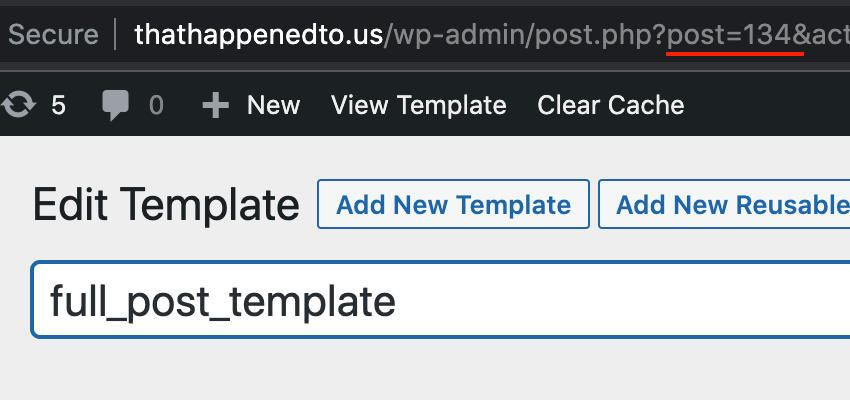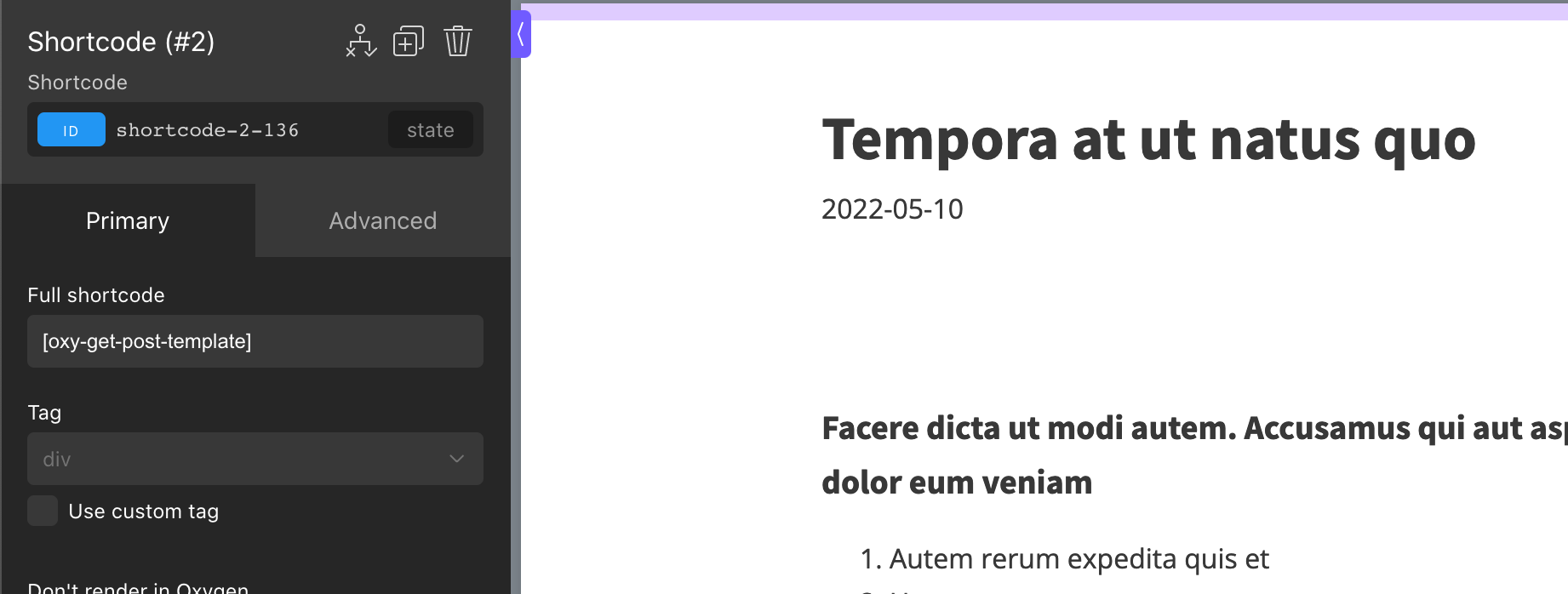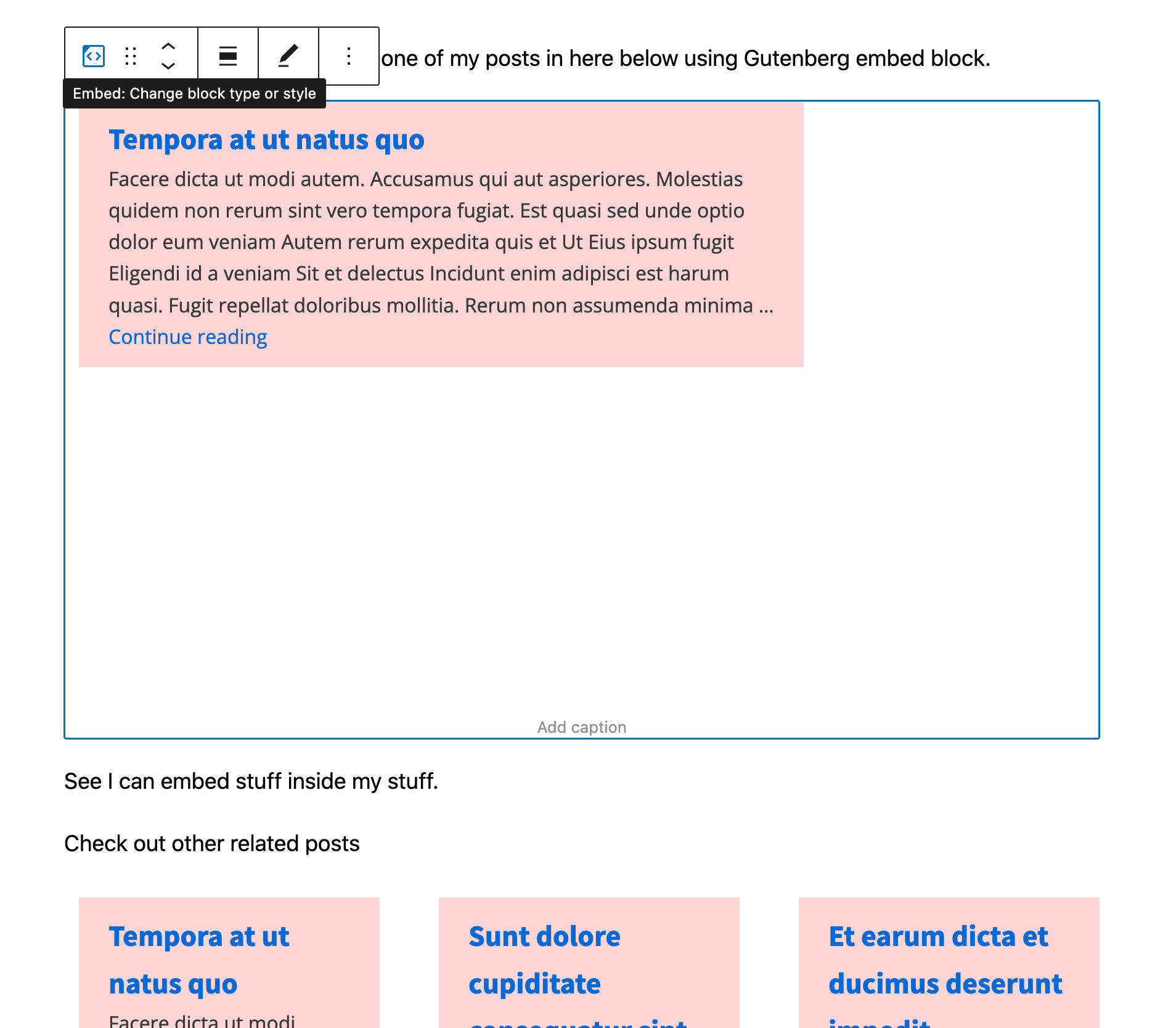Replicate default Wordpress /embed post feature
by rob
oxygenbuilder, php, wordpressOxygenBuilder disables the Wordpress theme and renders content using its own templates, so if something isn’t created for a specific content type, Oxygen will render the page using the catch-all template.
This is fine for most cases, except when you want it to embed a post.
Generally when you have the permalink for a post and add “/embed” or “/embed/” to the URL, WP will use a secondary embed template to render that post’s content, and conveniently it’s usually just the post’s title (with link) and the featured image. But when /embed is requested with Oxygen, it doesn’t know where to look so it goes to the catch-all template which makes it… render the whole page, which isn’t the desired behaviour unless you want a whole page to be embedded inside another page.
If you require this functionality, we can achieve this with some code.
Original tutorial was made only for Oxygen 4.0, has since been updated for Oxygen 3.8.1+
This guide assumes some basic knowledge of Wordpress and Oxygen Builder
Requirements
This tutorial is for Oxygen 3.8.1+, and Wordpress 5.9+ since that was what I made it in.
Ensure that “Disables the automatic embedding of some content (YouTube videos, Tweets, etc.,) when pasting the URL into your blog posts” in Oxygen’s Bload Eliminator is unchecked.
The Process
- Create template for normal content.
- Create template for content when it is being embedded.
- Write some custom PHP.
- Create template that will only have a shortcode element which picks either template made in 1 or 2 based on the URL.
Templates
First one, the full post template
Create the normal template for your Single post content, you know with Title, Featured Image, Content, etc. Make this priority 0. Inherit the main template with your menus and whatever here.
Second one, the embed post template
Create a template for the embedded content. This will be the div that is embedded where ever, like in the middle of another post’s content, so make it simple maybe just the Title as a link + featured image. Also make this priority 0.
Don’t inherit the main template with the menus here unless you want your embedded post to have the menus.
PHP
This is the PHP code portion of the guide.
- First function checks to see if the string “embed” is at the end of the permalink for the current post.
is_embed_element function
function is_embed_element() {
$queried = get_queried_object();
if( get_class( $queried ) === 'WP_Post' ) {
global $wp;
$requested_url = home_url( $wp->request );
$permalink = get_permalink( $queried );
$found_embed = strpos( $requested_url, 'embed', strlen($permalink) );
return $found_embed;
} else {
return false;
}
}
- This second function will be used as a shortcode. This function basically loads either the full post template or the embed post template based on the result of the
is_embed_elementfunction.
oxy_get_post_template function
function oxy_get_post_template() {
$template_id = -1;
if ( is_embed_element() ) {
// embed is in this URL, likely not as part of another word...
// this ID is the template ID of the one used to render embedded posts.
$template_id = 12;
} else {
// no embed found at end of URL so this is the template ID for the Full Post template.
$template_id = 13;
}
$result = "";
if( function_exists( 'do_oxygen_elements') ) {
// get shortcodes with 4.0
$json = oxygen_get_combined_tree( $template_id );
global $oxygen_doing_oxygen_elements;
$oxygen_doing_oxygen_elements = true;
$result = do_oxygen_elements($json);
$oxygen_doing_oxygen_elements = false;
} else {
// get shortcodes with 3.x
$tree = array();
global $ct_template_id;
$ct_template_id = $template_id;
$oxygen_vsb_css_files_to_load[] = get_the_ID();
$oxygen_vsb_css_files_to_load[] = $template_id;
$combinedCodes = oxygen_get_combined_shortcodes($template_id);
$tree['children'] = $combinedCodes['content'];
$shortcodes_json = json_encode($tree);
$shortcodes = components_json_to_shortcodes($shortcodes_json);
$result = do_shortcode( $shortcodes );
}
return $result;
}
// Add this shortcode.
add_shortcode( 'oxy-get-post-template', 'oxy_get_post_template' );
To get the ID for either the Full Post or Embed Post template you go to their edit pages and the post ID should be at the top.
 |
|---|
| Oxygen Template ID |
- And you need to use the
wp_footerhook to print the embed scripts. Here is the function and I explain why this is needed after.
oxy_load_wp_embed footer function
function oxy_load_wp_embeds() {
if( get_option( 'oxygen_vsb_disable_embeds' ) != true ) {
wp_enqueue_script('wp-embed'); // just in case
if( is_embed_element() ) {
print_embed_scripts();
// print_embed_styles();
}
}
}
add_action('wp_footer', 'oxy_load_wp_embeds', 11);
In this bit, we print the JS needed for the embedded iframe to notify the embedder that it has finished loading, and how to handle other events like clicking links inside that iframe. I also enqueue the script for processing embeds in case it isn’t already there.
There is a print_embed_styles function as well which prints the styles from the iframe header but that isn’t required unless there’s something weird happening then you can uncomment it.
I also check with Oxygen’s Bloat Eliminator to respect that setting.
Short aside on how Wordpress Post Embeds work. You can skip the next couple of paragraphs if you want.
Basically if you Embed a Post inside your Post content (like via Gutenberg) it adds a figure to the page that has a blockquote that only has the link to the Post and an iframe that contains that Post contents rendered with its Embed template.
The blockquote is a fallback in case the iframe doesn’t load, like if the page is down. When the iframe finishes loading, it should have some JS that does a postMessage to the parent container telling it to replace the blockquote with me instead. But Oxygen does not include this bit of JS which is why we check if it’s the embedded template, then use the print_embed_scripts function from Wordpress.
Aside over.
The 3rd Template, THE DECIDER
Create a 3rd template, make it for Single Post like the other two. Give it a higher priority than the other 2, so 1. In this template, just add a Shortcode element, the shortcode will be the one we created earlier:
[oxy-get-post-template]
Now any requests for single posts will get checked if “embed” is at the end of the URL. If it is, it’ll render the content using the Embed Post Template. If it isn’t then it’ll use the Full Post Template.
 |
|---|
| Shortcode Element |
And finish
If you use WP’s Gutenberg to Embed a post via Permalink, it’ll render using the Embed Post Template.
The gap below it seems to be some weird thing that Gutenberg is doing, outside the scope of this guide.
 |
|---|
| The Links are Embedded in Gutenberg |
 |
|---|
| Front-end |
See example here: http://thathappenedto.us/2022/05/test/
Then if you want to see what the Embed looks like http://thathappenedto.us/2022/05/test/embed/
Issues
-
The post rendering code I got from following Oxygen’s code in their plugin so I’m not 100% sure this is the correct way of doing it, maybe someone more knowledgable can give me a heads up.
-
Code has not been thoroughly tested, haven’t accounted for URLs that follow different permalink pattern, or checked to see if any adverse effects can occur due to changing the
$oxygen_doing_oxygen_elementsvariable, but I turned it on and off in the code. -
Use at own risk, can probably add more checks for
post_typesand other checks to ensure it won’t break anything.
Conclusion
Credit to Supa Mike’s post about multiple headers for Polylang https://oxygen4fun.supadezign.com/tutorials/how-to-have-different-menus-with-polylang/ for seeding the idea of using a shortcode to render different content.
If you have any questions you can DM me on twitter @robchankh or leave a comment on FB where I’ll post this.